While we are used to seeing the world in the visible spectrum, moving outside of that into either the Ultraviolet (UV) or Infrared (IR) regions can make scenes look very different. During a trip to Tasmania I took one of my multispectral cameras with me to compared some landscape photography in the UV and IR with visible light images, and these are what I am sharing today.
The comparison images are shown in black and white, to remove the issues of whitebalancing non-visible images. A multispectral Canon EOS 5DSR was used along with an 85mm f4.5 Asahi Ultra Achromatic Takumer (which has quartz and calcium fluoride lens elements instead of glass to allow it to transmit UV). The following filters/filter combinations were used in order of increasing wavelength range;
UV – Baader U
UV/Visible – Chinese BG39 2.5mm alone
Visible – Chinese BG39 2.5mm + B+W486
IR – Hoya R72
First set of images – The view from Ben Lomond.
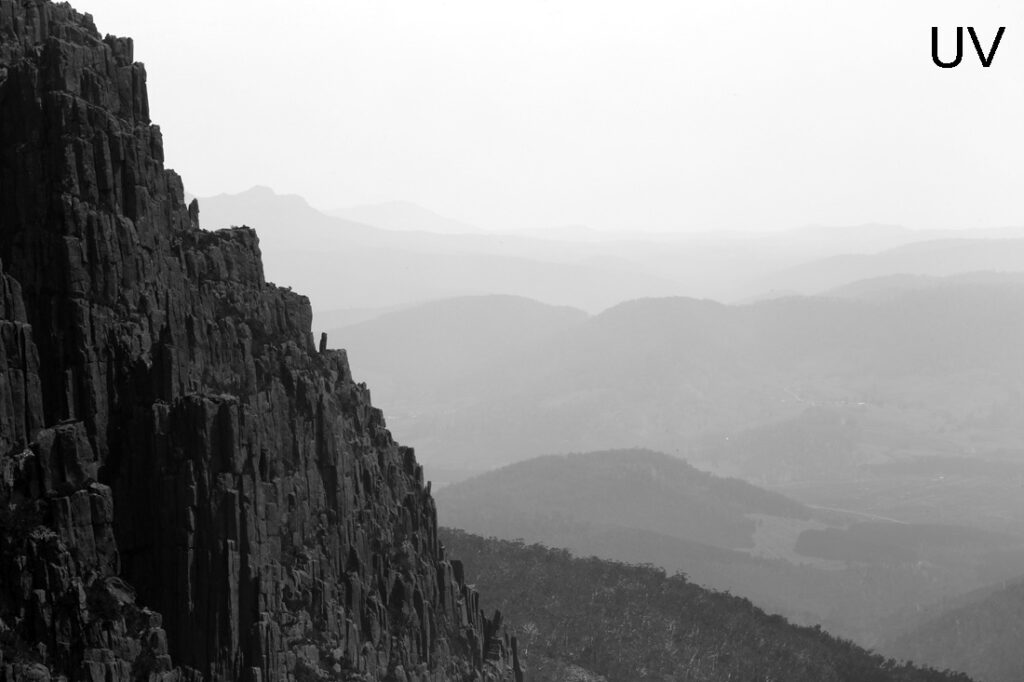
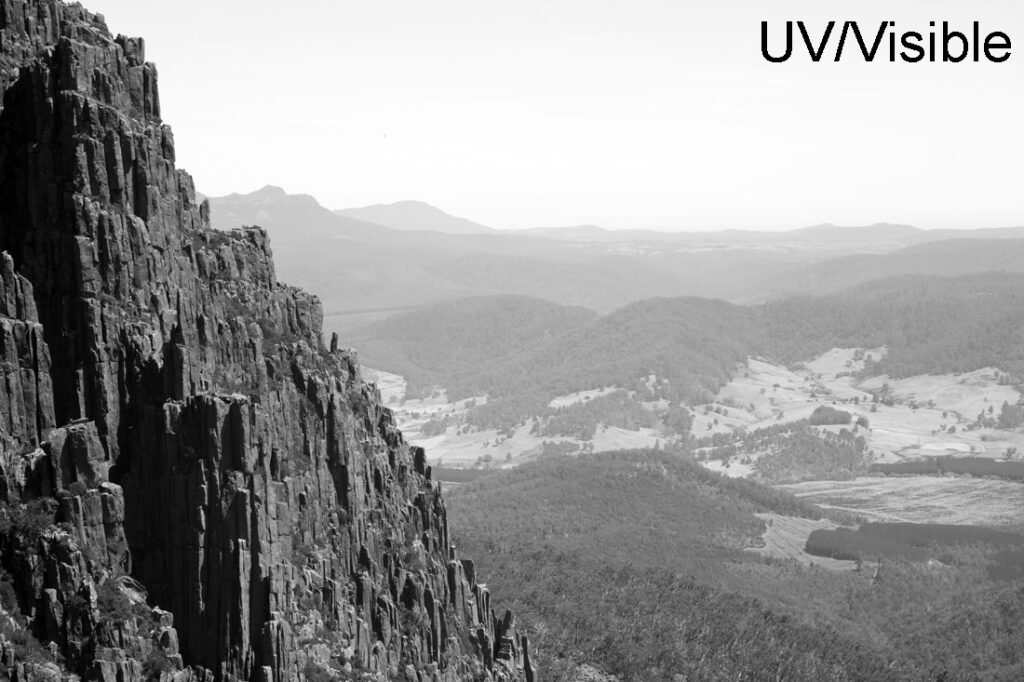
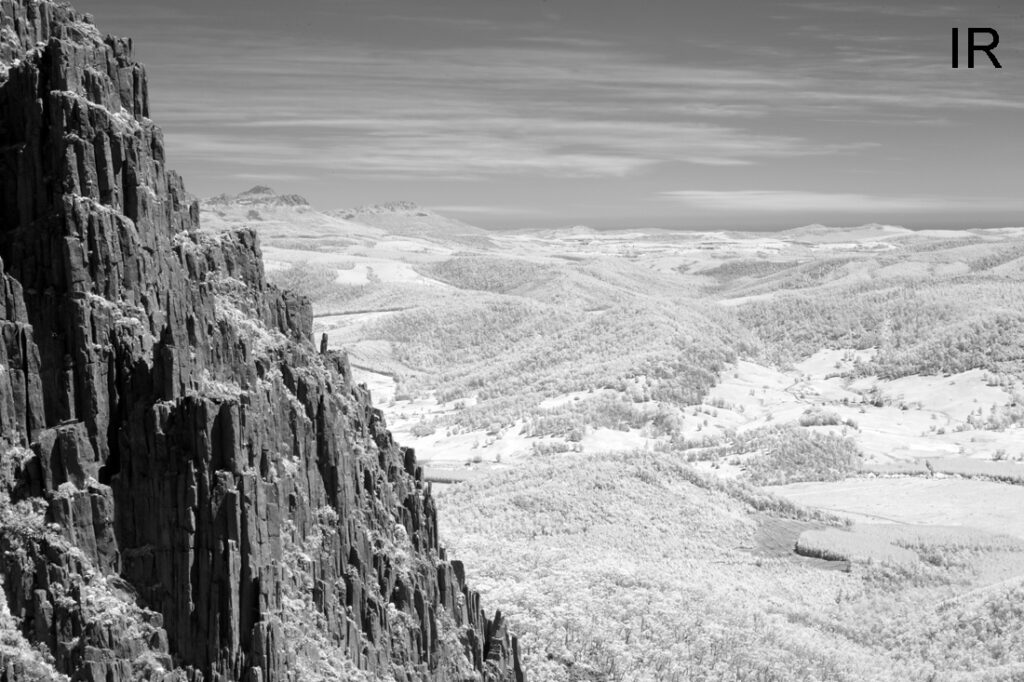
Note that the visible image here is actually UV+visible as the UV portion of the spectrum was not removed by the BG39 filter alone. However the UV contributes relatively little to the image, so the image should be considered as mainly visible light. In UV the haze is emphasized, making the distant landscape blend more into the sky. It also lessens the appearance of clouds making the sky look more homogeneous and giving more of a feeling of distance to the landscape. The contrast between bright sunlight and shadow on the rocks is also reduced and foliage is darkened. Conversely, in the IR image blue sky becomes darkened, foliage almost white, and haze is reduced.
Next area Stephens Bay in the South West National Park, and about as remote as you can get (which is saying something in Tasmania).
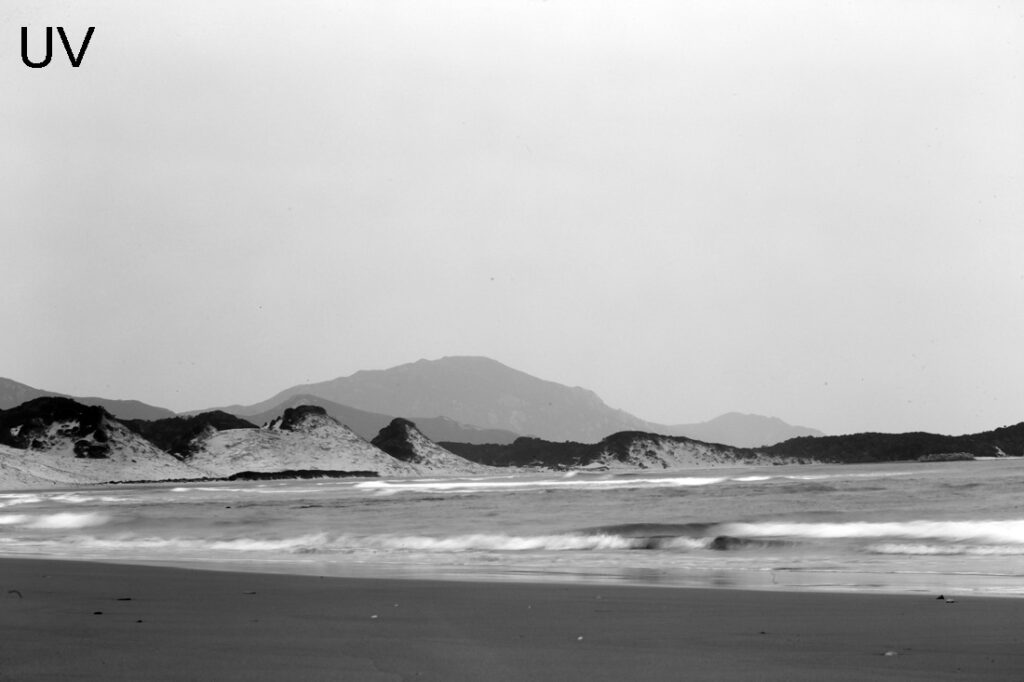
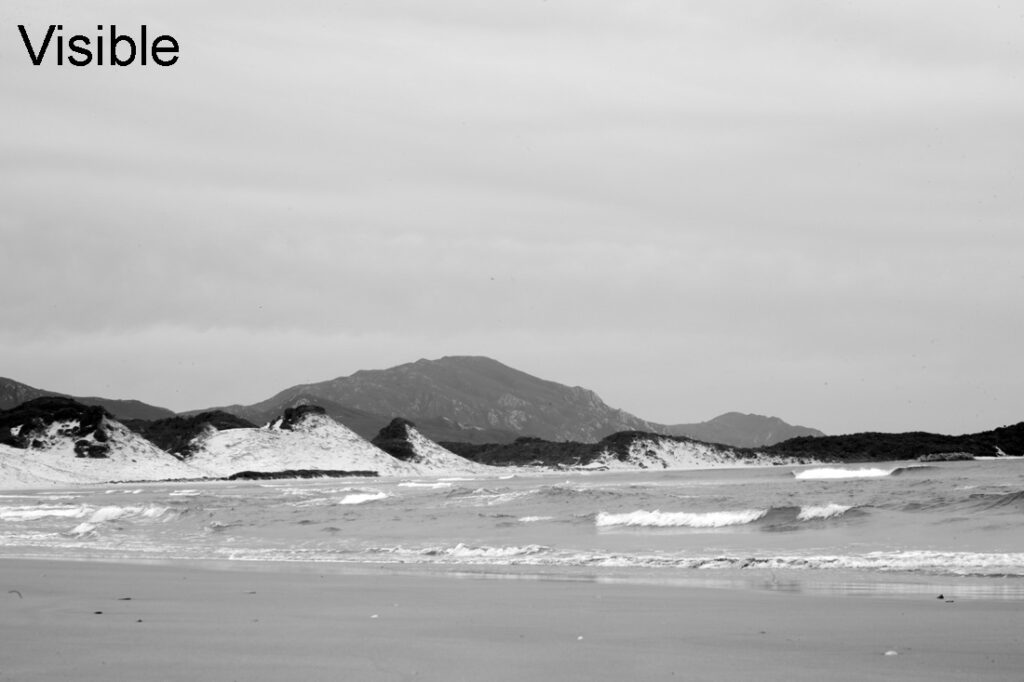
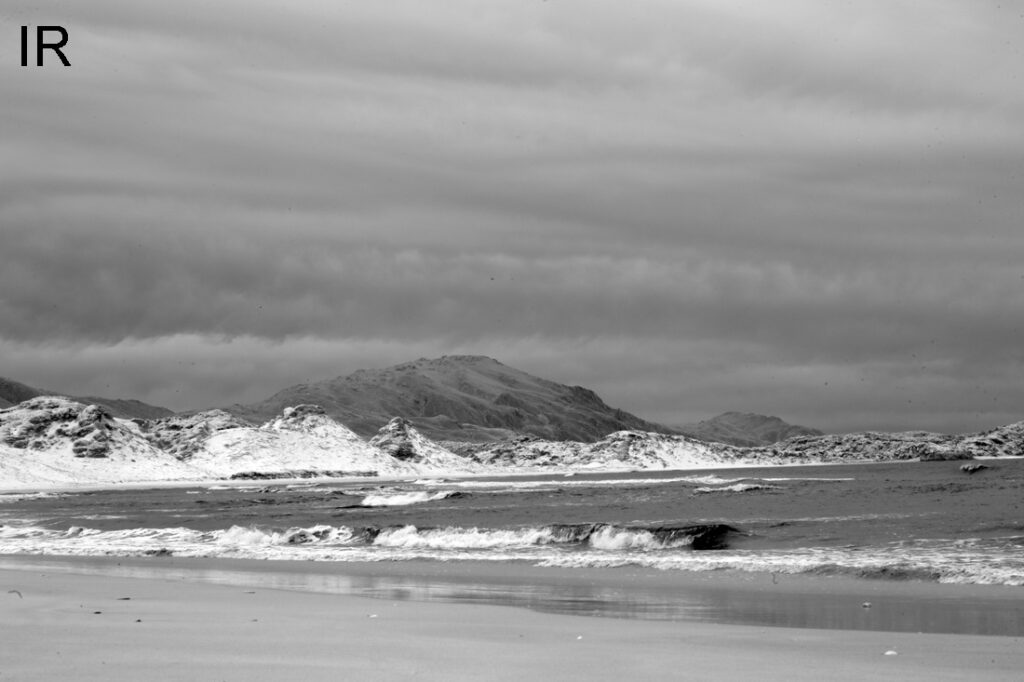
It was quite a dull day when we were there, with no blue skies, but the effect of going from UV to Visible (this time a UV blocker was used in combination with the IR blocking filter) to IR can again clearly be seen. As an aside, this is a fascinating area and hugely culturally significant as there are Aboriginal middens along the beach which are full of shells and date back thousands of years.
The final area for today’s post, the view to the dolorite spires of Cape Raoul from Maingon Bay Lookout at Remarkable Cave on the Tasman Peninsular.
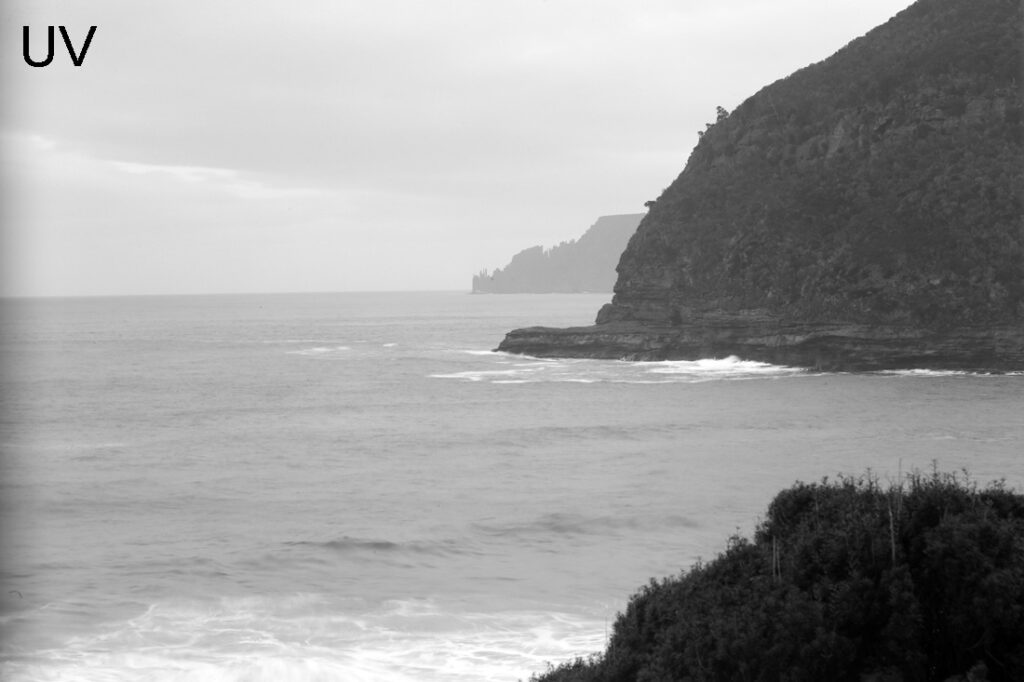

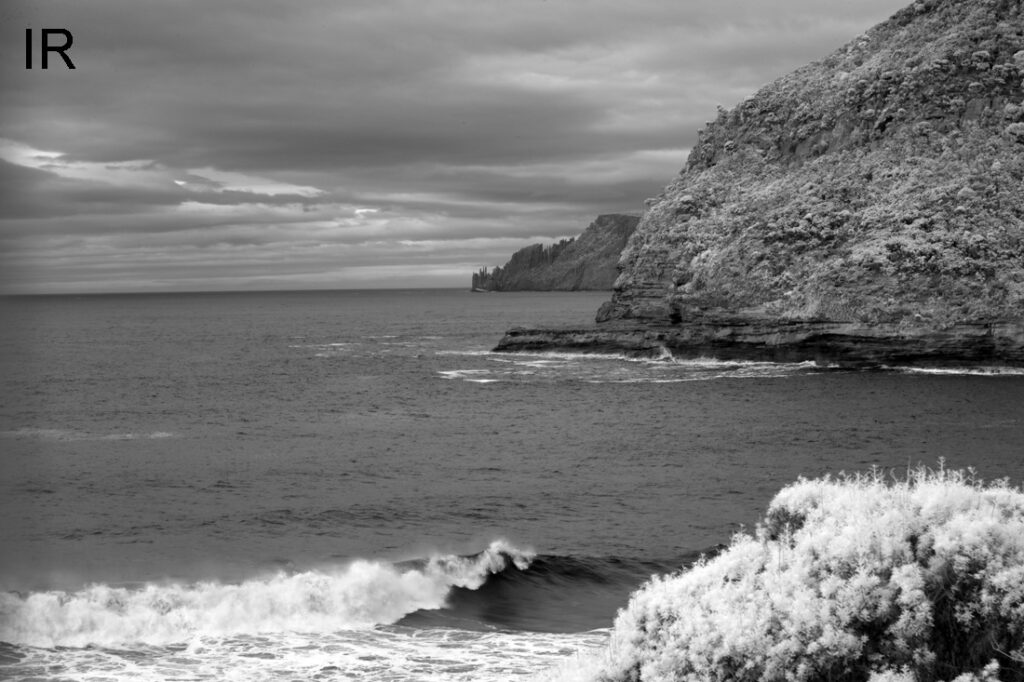
Again these show the expected behavior going from UV through to IR.
Varying the wavelengths we use for imaging has a huge impact on how a scene is rendered, and this is as applicable to areas such as dermatology and forensics as it is to landscape photography. Thanks for reading and if you’d like to know more about this or other aspects of my work, I can be reached here.
